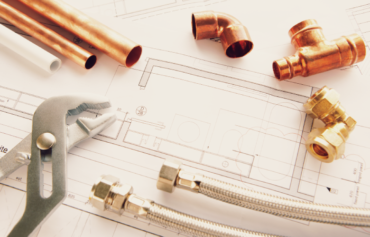Hey there, fellow adventurers! This week, we’re going to delve into a topic that’s crucial for all of you who own travel trailers or fifth wheels – the proper way to transport propane tanks, also known as DOT cylinders. Whether you’re taking them for servicing, recertification, or just need to top them off, it’s essential to follow specific steps to ensure your safety and the integrity of your propane setup. In this blog, we’ll guide you through the process step by step, so you can confidently handle your propane tanks.
Step 1: Turn Off Propane Appliances Inside
The first and most crucial step is to head inside your RV and turn off all propane-fueled appliances. This includes the refrigerator, water heater, furnace, or anything else that uses propane as an energy source.
Step 2: Shut Off the Service Valve
Once you’ve turned off all propane appliances inside your rig, it’s time to head outside and locate the service valve. This valve is typically triangle-shaped, silver in color, and often features arrows to indicate its direction. To close it, turn the valve righty-tighty, or in a clockwise direction.
Step 3: Disconnect the Pigtail
Next, you’ll need to disconnect the pigtail from your propane tank. The pigtail is the hose that connects your propane tank to the RV’s propane system. To remove it, simply turn it to the right to release the connector (this is opposite from what feels normal). When you disconnect it, the hose might have some memory and hang there, which is perfectly normal. Additionally, there should be a dust cap provided – replace this dust cap where the pigtial/excess flow valve used to be connected to prevent debris or dust from getting into the service valve area.
Step 4: Release the Tank from its Holding
Propane tanks are typically secured to a platform or a holding area on your RV. To transport them, you’ll need to release them from these securements. This could involve removing wing nuts, straps, or any other mechanism holding the tanks in place. Be sure to follow the specific instructions for your RV’s setup.
Step 5: Keep the Tank Upright During Transport
One crucial safety tip is to transport your propane tank in an upright position at all times. Avoid laying it on its side, as this can lead to propane touching the service valve area, which should be prevented at all costs.
You can place the tank in a carrier designed for this purpose in the back of your tow vehicle, in the SUV’s cargo area, or even in the back seat of your car if it fits. However, when transporting it inside your vehicle, it’s essential to crack a window open for ventilation.
Safety Tip: Secure the Tank
Regardless of where you place your propane tank during transport, it must be securely strapped down in all directions. Using a bungee cord or the vehicle’s seat belt (if applicable) is a must to prevent the tank from moving around, which can be hazardous.
Step 6: Transport with Caution
When you’re taking your propane tank for topping off or recertification, prioritize safety. Go directly to the dispenser or service center without detours or unnecessary stops. Never leave the tank in a hot vehicle while running errands – this can be extremely dangerous.
Step 7: Reverse the Process After Servicing
Upon returning from your servicing or recertification appointment, it’s time to reverse the steps you followed earlier. This involves placing the tank back on its platform, securing it properly, removing the dust cap, and attaching the pigtail/excess flow valve connector to the tank. Finally, open the service valve and you will be ready to turn on the propane appliances inside your RV.
In conclusion, transporting propane tanks for your RV is a crucial but straightforward process when you follow these steps diligently. Remember that propane is a flammable gas, so taking these precautions is essential to ensure your safety and the safety of those around you. Now, you can confidently handle your propane tanks and enjoy your RV adventures worry-free!




